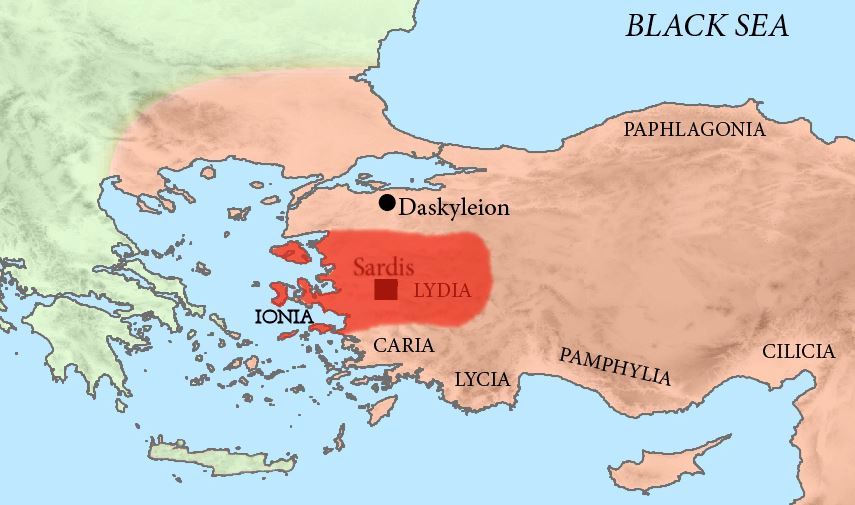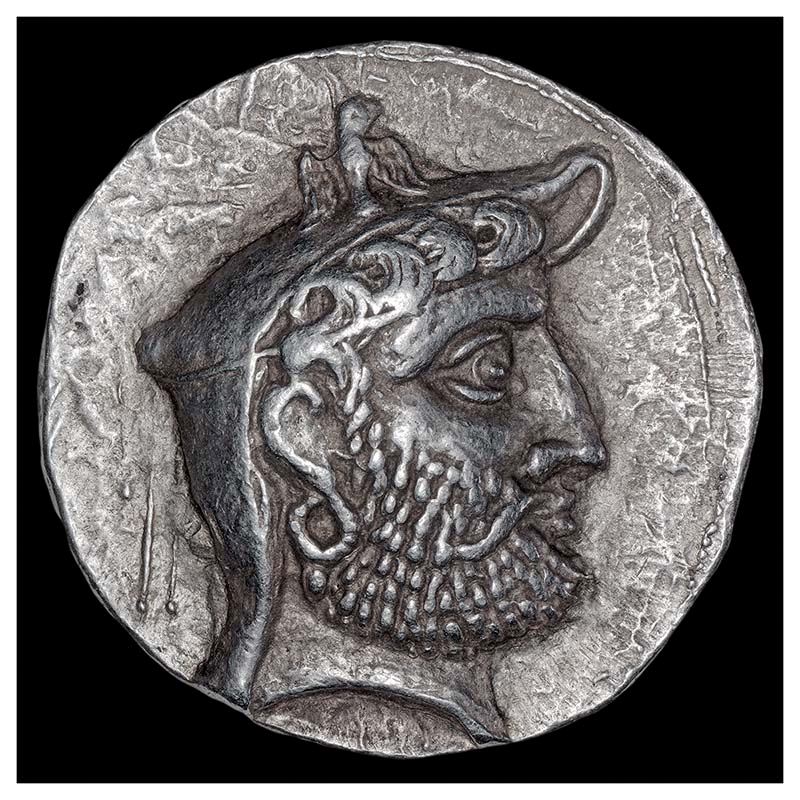In 547 BC, the Lydian king Croesus besieged and captured the Persian city of Pteria in Cappadocia and enslaved its inhabitants. The Persian king Cyrus The Great marched with his army against the Lydians. The Battle of Pteria resulted in a stalemate, forcing the Lydians to retreat to their capital city of Sardis. Some months later the Persian and Lydian kings met at the Battle of Thymbra. Cyrus won and captured the capital city of Sardis by 546 BC. Lydia became a province (satrapy) of the Persian Empire. Tabalus, appointed by Cyrus the Great was the first satrap; however, his rule did not last long as the Lydians revolted. The insurrection was suppressed by general Mazares and his successor Harpagus. After Cyrus' death, Oroetus was appointed as satrap. Oroetus ruled during the reign of Cambyses, and after the chaotic period that followed the Persian king's death, he conquered the Greek isle of Samos, killing its ruler Polycrates. Due to his growing power, Darius the Great had Bagaeus kill Oroetus. Bagaeus himself may have become satrap for a short period, but the next rulers were Otanes and Darius' younger brother, Artaphernes.

Autophradates was a satrap of Lydia under Artaxerxes II, from 391 B.C. until the late 350s.
Some coins with his portrait come from the cities Lampsacus and Cyme, which belonged to his satrapy. In an inscription from Lycia, which was in the sphere of his influence, he is called “Vātafradāta, the Persian satrap.”
Autophradates and Hecatomnos, satrap of Caria, were ordered to pu...
Some coins with his portrait come from the cities Lampsacus and Cyme, which belonged to his satrapy. In an inscription from Lycia, which was in the sphere of his influence, he is called “Vātafradāta, the Persian satrap.”
Autophradates and Hecatomnos, satrap of Caria, were ordered to pu...

